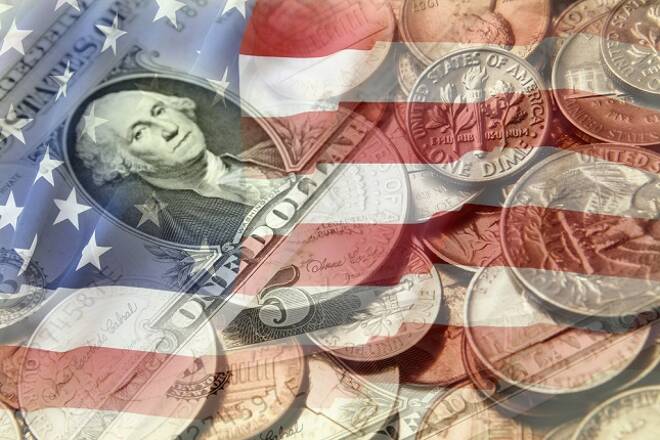Advertisement
Advertisement
Lack of Wage Pressure Could Mean More Patient Federal Reserve
By:
The government reported that the closely watched average hourly earnings number rose by 4 cents, equating to a 2.6 percent annualized gain, a little off the pace from the previous month and slightly less than expected.
The week finished with the U.S. releasing its latest data on the jobs market in April and the Federal Open Market Committee unleashing a slew of speakers.
U.S. Non-Farm Payrolls Report
According to the U.S. Bureau of Labor Statistics, non-farm payrolls rose by just 164,000 versus an expected payroll growth of 192,000. The previous month was upwardly revised to 135,000. The unemployment rate fell to 3.9 percent in April, an 18 year low. Analysts were looking for a drop of one-tenth of a percent to 4.0 percent.
The government also reported that the closely watched average hourly earnings number rose by 4 cents, equating to a 2.6 percent annualized gain, a little off the pace from the previous month and slightly less than expected. The average workweek was unchanged at 34.1 hours.
Unemployment data showing discouraged workers and those holding part-time positions for economic reasons fell to 7.8 percent, the lowest since July 2001. Additionally, the drop in the unemployment rate came amid another decline in the labor force participation rate to 62.8 percent, the lowest since January. The number of people counted as out of the labor force swelled by 410,000 to 95.74 million.
Finally, full-time jobs rose by 319,000 while part-time positions fell by 350,000.
U.S. Federal Reserve Speakers
Federal Reserve Bank of New York President William Dudley said he is optimistic about U.S. growth, while adding it’s too early to judge that the economy had overcome persistently low inflation.
“I wouldn’t quite declare victory yet” on consistently achieving the Fed’s 2 percent inflation target, Dudley said Friday in New York during an interview with Bloomberg. “The inflation data goes up and down month to month, but we have made some progress and I am certainly happy where we are today.”
San Francisco Fed President John Williams told CNBC Friday, there is a good chance unemployment will dip to 3.5 percent and inflation could go above the Federal Reserve’s 2-percent target.
“I see the unemployment rate getting down to 3.5 percent. I see us maybe modestly overshooting our 2 percent inflation target,” said Williams.
Federal Reserve Board Governor Randal Quarles on Friday said the U.S. central bank does not target asset prices and will not cut rates simply if the stock market tanks.
“I don’t think that anyone should be expecting that, you know, sort of, a change in valuation, a rapid change in equity valuations that simply reflect a reversion of asset prices to the mean, as opposed to some signal about developments in the real economy, would result in an action by the Fed,” Quarles said in response to a question at a Hoover Institution conference on whether there is a Fed “put” by which the Fed uses rate cuts to fight stock-market declines.
Atlanta Fed President Raphael Bostic said on Friday, the Federal Reserve should raise interest rates twice more this year, though upside potential from tax cuts and new government spending and a “rosy” economic outlook could require a bit more tightening.
“I’m pretty firmly a three right now,” Bostic told Reuters in an interview on the sidelines of the Hoover Institution’s annual monetary policy conference, referring to the total number of rate hikes he expects the Fed to deliver this year. “I’m open to going either direction, going back to two (rate hikes) or going to four, depending on what the data show.”
About the Author
James Hyerczykauthor
James Hyerczyk is a U.S. based seasoned technical analyst and educator with over 40 years of experience in market analysis and trading, specializing in chart patterns and price movement. He is the author of two books on technical analysis and has a background in both futures and stock markets.
Advertisement
